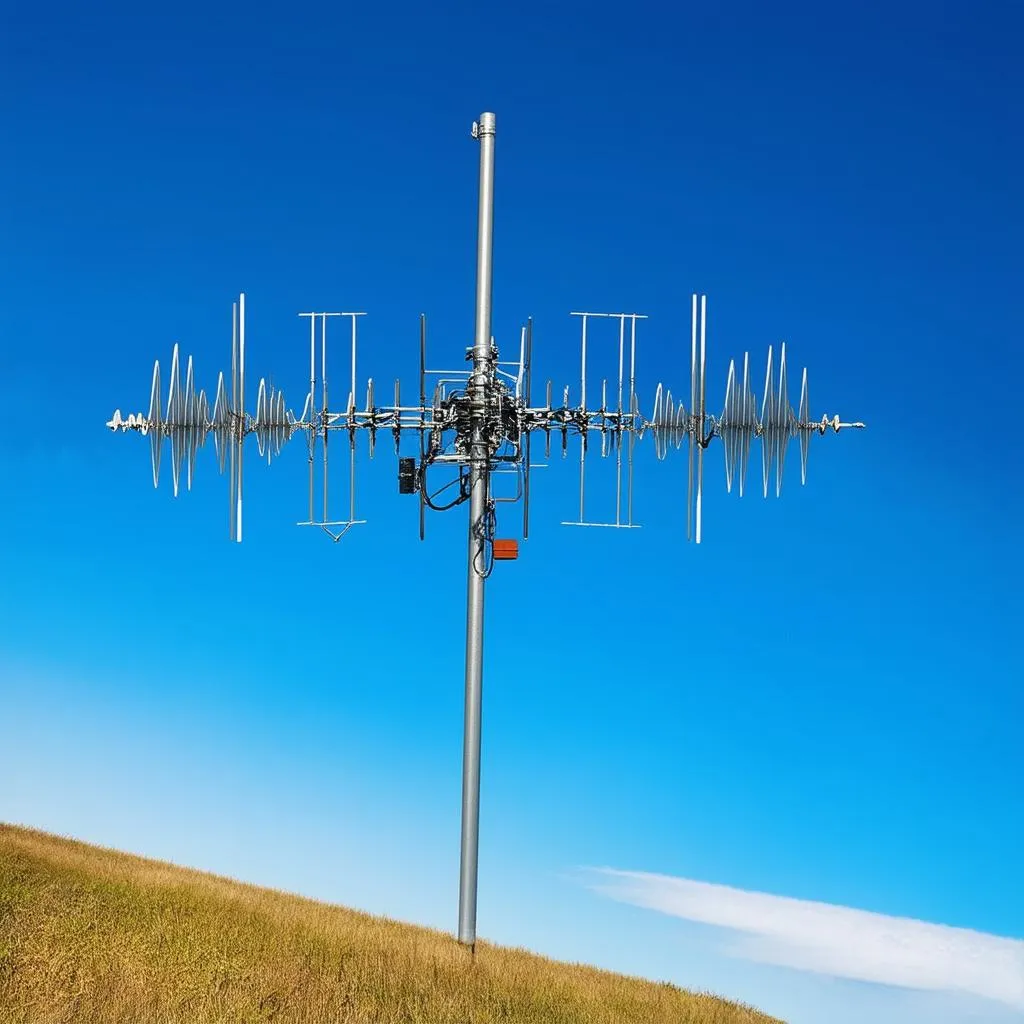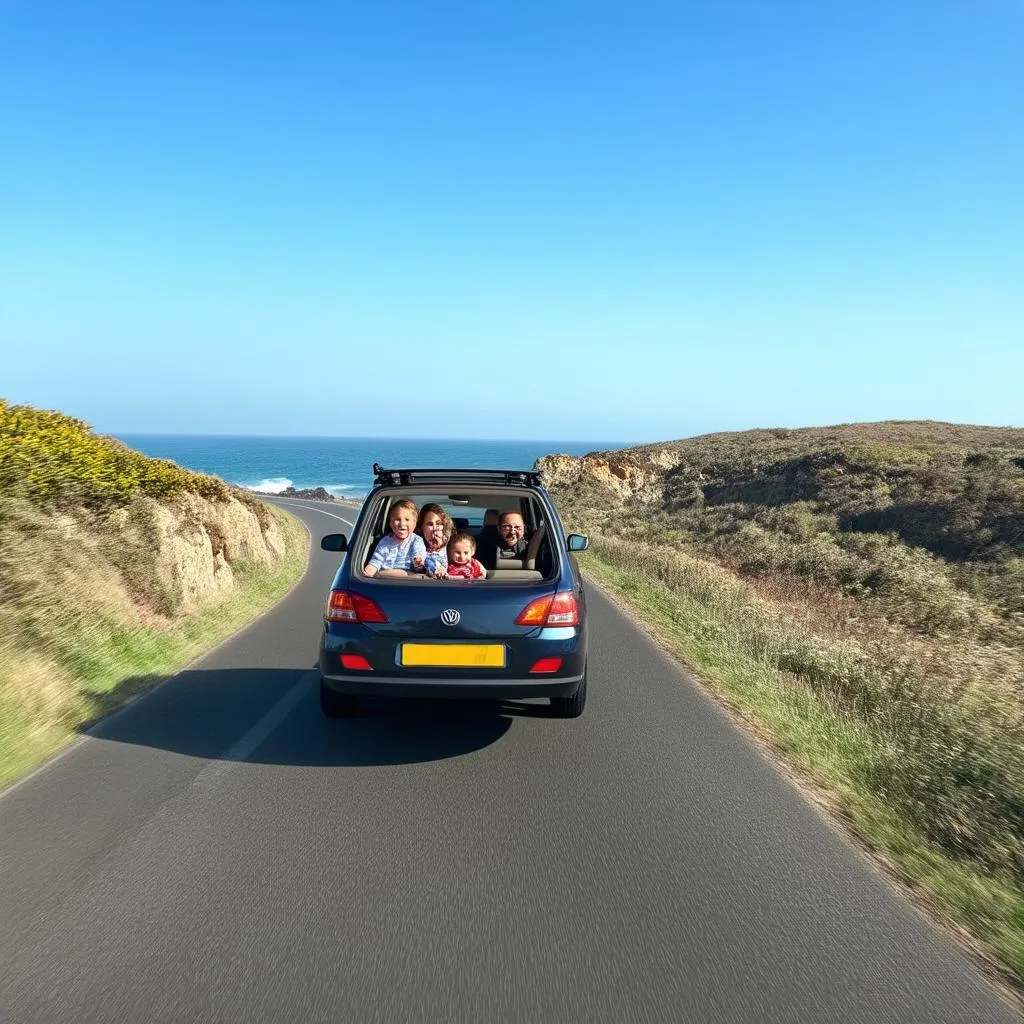Remember that time you were driving through the Scottish Highlands, listening to a live broadcast of the Highland Games on the radio? The rolling hills, the sound of bagpipes in the distance, and the commentator’s voice filling your car – it felt like magic. But have you ever wondered how that sound actually reached you, traveling all the way from the games to your radio? Let’s tune in and explore the fascinating journey of radio signals!
Unraveling the Mystery: From Radio Tower to Your Ears
Radio signals might seem like magic, but they’re actually a form of electromagnetic radiation – just like light! They travel at the speed of light, which is a whopping 299,792,458 meters per second. That’s fast enough to circle the Earth over seven times in a single second!
Here’s a simplified breakdown of how radio signals make their way from the transmitter to your radio:
- The Source: It all starts at a radio station, where sound waves (like a musician’s voice or the strumming of a guitar) are converted into electrical signals.
- Riding the Waves: These electrical signals are then combined with a radio wave, which acts like a carrier, much like a car carrying passengers.
- Antenna Power: This combined signal is then sent out from a tall antenna, radiating outwards in all directions.
- Catching the Waves: Your radio, with its own antenna, acts like a receiver. It picks up these electromagnetic waves and converts them back into electrical signals.
- Back to Sound: Finally, your radio turns those electrical signals back into the sound waves that you hear, allowing you to enjoy your favorite tunes or programs.
 radio waves
radio waves
Different Strokes for Different Folks: AM vs. FM Radio
You might have noticed that radio comes in different flavors: AM and FM. They both use radio waves, but they travel in slightly different ways.
- AM Radio (Amplitude Modulation): These signals are like marathon runners – they can travel long distances, even bouncing off the upper layers of the atmosphere to reach far-off places. That’s why you might be able to pick up AM stations from hundreds of miles away, especially at night.
- FM Radio (Frequency Modulation): FM signals are more like sprinters – they’re powerful but have a shorter range. They travel in straight lines and are easily blocked by obstacles like mountains or tall buildings. However, they provide a clearer, higher-quality sound, perfect for enjoying music in detail.
Beyond Entertainment: Radio Waves at Work
Radio signals are not just about entertainment; they play a crucial role in many aspects of our lives:
- Communication: From walkie-talkies used by park rangers in Yosemite National Park to air traffic control towers guiding planes safely to their destination, radio waves keep us connected.
- Navigation: GPS systems rely on radio signals from satellites to pinpoint our location on Earth, making sure you reach your hotel in a new city without getting lost.
- Science and Exploration: Astronomers use radio telescopes to study distant objects in space, unraveling the mysteries of the universe.
FAQs: Your Questions About Radio Signals Answered
- How fast do radio waves travel? They zoom through space at the speed of light, which is approximately 299,792,458 meters per second.
- Why can AM radio signals travel farther at night? The ionosphere, a layer of Earth’s atmosphere, reflects AM waves at night, allowing them to travel greater distances.
- Can radio waves travel through space? Yes, they can! That’s how we receive signals from spacecraft exploring the vast reaches of our solar system.
Travelcar.edu.vn: Your Travel Companion
Planning your next adventure? Check out travelcar.edu.vn for travel tips, destination guides, and more. Whether you’re dreaming of hiking the Inca Trail to Machu Picchu or exploring the ancient city of Petra, we’ve got you covered.
 family car radio
family car radio
Conclusion: The Wonders of the Invisible
Next time you turn on the radio, take a moment to appreciate the invisible highways of radio waves that connect us all. It’s a testament to human ingenuity and the incredible power of science to bridge distances and enrich our lives.
Do you have any other questions about radio waves or travel in general? Share your thoughts in the comments below!